Tom Routh: At the Root of Innovation
With his beginnings brought on by an interest in designing backpacks under his own brand CirqueWorks and five years at the legendary Arc’teryx brand, Tom Routh has become a renowned figure in the world of snowboarding. We catch up with the designer for a hearty chat.
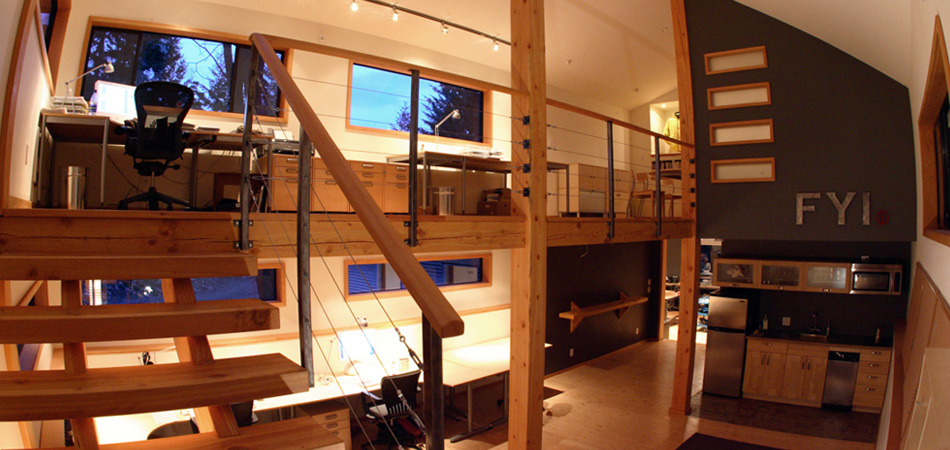
The name FYi Design may not be the most prominent name in the realm of performance outdoor gear but behind the scenes lies company founder Tom Routh, who has had an integral part in the realm of performance technical outerwear. With his beginnings brought on by an interest in designing backpacks under his own brand CirqueWorks and five years at the legendary Arc’teryx brand, these experiences prepared him for the creation of FYi Design. The multi-faceted company is the backbone behind such programs as Burton [ak] in addition to helping orchestrate lines and products with the likes of AETHER, fragment design and SOPH. Tom and I took the time to speak about many of the underlying things that come together to form FYi Design’s philosophy and approach, as well as some of the industry-specific challenges he faces.
Interview: Eugene Kan
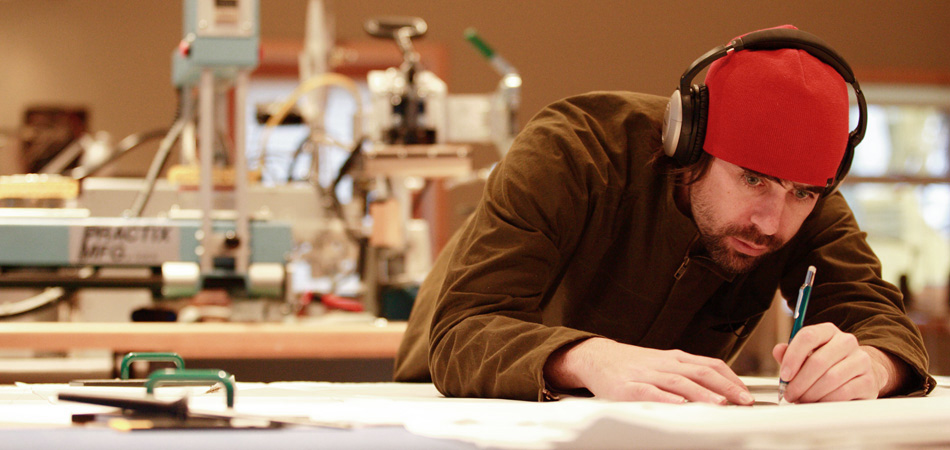
Interview with Tom Routh
What’s going on Tom, hope things are going well. I understand that prior to creating FYI Design you spent 5 years over at Arc’teryx. Could you give us a little background information about yourself prior to Arc’teryx?
Hey Eugene, everything is going great, thanks. Yeah, prior to Arc’ I had my own label called CirqueWorks, and was designing and manufacturing technical backpacks in-house. My interest in technical backpacks initially came from the need for a purpose built pack for backcountry snowboarding and then expanded into mountaineering and full-size backpacking packs. Prior to that I spent a bunch of years snowboarding all over the world, both competing and taking backcountry adventure trips. I started to study design, pattern-making and sewing as a means to improve the gear I was using.
While making the move from CirqueWorks to Arc’teryx, did you need to effectively diversify your skill set to become more well-rounded? There were requirements in developing not only backpack offerings but apparel and softgoods as well?
Yes, exactly. I was pretty much a pack specialist prior to working for Arc’. It was a huge challenge as I was tasked with developing a complete snowsports range including outerwear and thermal layers as well as packs. It’s a totally different set of skills with only a little crossover… different machines, materials, construction processes etc. When patterning packs you can shape the bag into anything you want, and fit issues are limited to the suspension and lumbar that comes into contact with the body. With apparel you are patterning the fit with the body inside, as well as developing the range of movement for the activity of the end user. It’s totally different from a design perspective. A pack generally serves utilitarian purposes, where a jacket becomes part of a person’s personal identity. You have a different relationship with the product. From a design perspective it’s a different set of challenges.
For the first design cycle at Arc’ I had about 18 months to develop 37 different products and that time frame had to include my apparel learning curve. It took about 6 months to get up to speed on everything, another 6 months working on new technologies and R&D and the last 6 months working crazy hours to get the line ready. At that time, designers at Arc’ were responsible for patterning and had to be able to build a perfect prototype themselves. The industry doesn’t generally work that way, usually you have a team of people with the designer drawing pictures, a pattern-maker developing patterns, a product manager dealing with sourcing issues and data capture and sample sewers to build the prototypes. At that time we did everything, all the way into production. This approach insured the integrity of the designer’s intent, which is why so much great product was achieved at Arc’teryx. I pulled a lot of all-nighters and my life was totally consumed by the project during that time. A lot of new tech was developed out of the efforts put forth and some that are still cutting-edge today. I had a huge advantage in that the Arc’ design studio was on top of the factory (Arc’ owns their own manufacturing facility), so anything was possible. I could run downstairs and work directly with specific operators and I could train them directly to commercialize new processes. It was a unique situation in the industry.
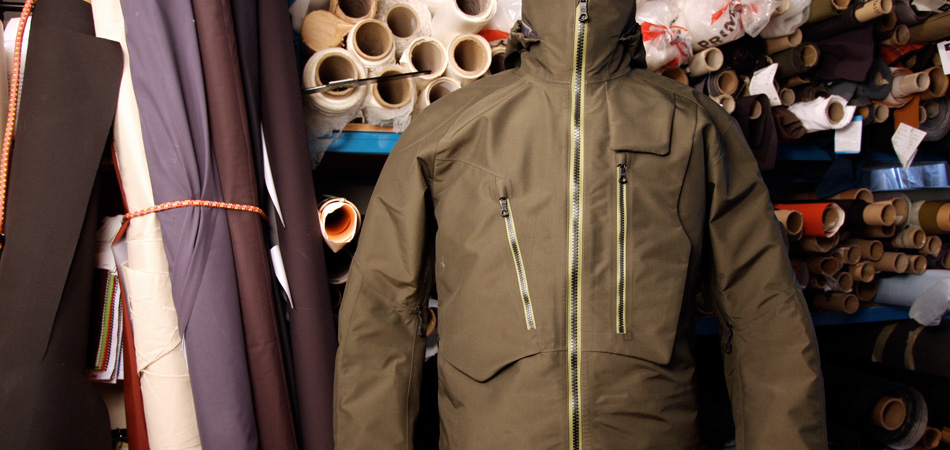
Having understood the back-end side of things at Arc’teryx, I think you’ve answered a question many have asked regarding exactly why is Arc’teryx the leading purveyor in performance outdoor goods. It seems as though having developed such a solid framework through Arc’ effectively paved the way to the foundation of FYi Design. Going from Arc’ to creating FYi, was it a smooth progression or were there any unseen obstacles starting your own brand that weren’t apparent until FYi started gaining traction and steam?
I really founded FYI for a couple of (big) reasons. Number one, I felt to do my best work, I needed to control my creative process and environment and number two, I needed to realign my lifestyle. During my latter years at Arc’, I noticed that it became increasingly difficult to be creative during business hours. 9 to 5 was consumed with meetings, correspondence and addressing production problems among other things. There were too many distractions to be creative. I ended up setting up a mini-studio in my downtown loft so I could go home and do the creative part of my job at night. After awhile I realized I didn’t use Arc’s infrastructure to do my job. I’ve always owned my own tools and machines, so the brand at that point was just an avenue to take my work to market. After 10 years of city life which included 5 years with CirqueWorks in Portland and 5 years with Arc’ in Vancouver, I was getting spun out. I grew up in the mountains and my outdoor lifestyle is what led me into design. Yet design was taking me away from my outdoor lifestyle. It started to feel wrong to be designing technical outdoor gear in an urban environment. I think I started to have an identity crisis of sorts. That’s when I decided to flip the script and start FYi. I sold my downtown loft, bought a dirtbike and a snowmobile and proceeded to move to right outside Pemberton, British Columbia (a town with a population of 3,000 people)! I made a fundamental decision that design needed to support my lifestyle even if that meant taking a big pay cut.
I think the biggest challenge was running the studio from a rural location. It was a risk. I wasn’t sure it would work. In the city you can go find anything you need anytime. Out here, you need to have EVERYTHING in-house and prepared accordingly. You can’t have a project stall because you’re missing a zipper or don’t have the right tool. We had to set up the studio with everything the factories have, which is both expensive and takes a lot of time and effort to get up and running. In the beginning it was all the small stuff that you take for granted that was challenging. No cell service, no FedEx, no satellite Internet, that kind of stuff. Now the studio is super dialed and running smooth.
I think it’s interesting how some aspects of your job with Arc’ dealing with managerial and logistics had prevented you from being fully dedicated to the creative aspect. I’m not sure if you’ve heard but Google encourages its employees to take 20% of their work time to work on projects that interest them (Google Innovation Time Off) which has obviously paid dividends with services such as Gmail, Google News and AdSense all emanating from this concept. Could you go into detail about the FYi Compound, do you maintain a residence there as well or do all of you live in Pemberton and commute?
The FYi compound is currently on 11 acres about 30 minutes outside of Pemberton. We’re literally at the end of the road. Susanna and I have our house on the property and the rest of the crew is commuting out from Pemberton. The actual design studio is 2,500 square feet. That includes 1,100 square feet of office space and the rest is the workshop full of machines. Then we have another 1,400 square feet of shop to support the “lifestyle” aspect of our program, that houses snowboard gear, snowmobiles, dirt bikes etc. Although this might all change soon, as we’re starting to contemplate designing and building a new studio in Pemberton (moving into the big city haha!). So we just listed the Birken compound for sale.
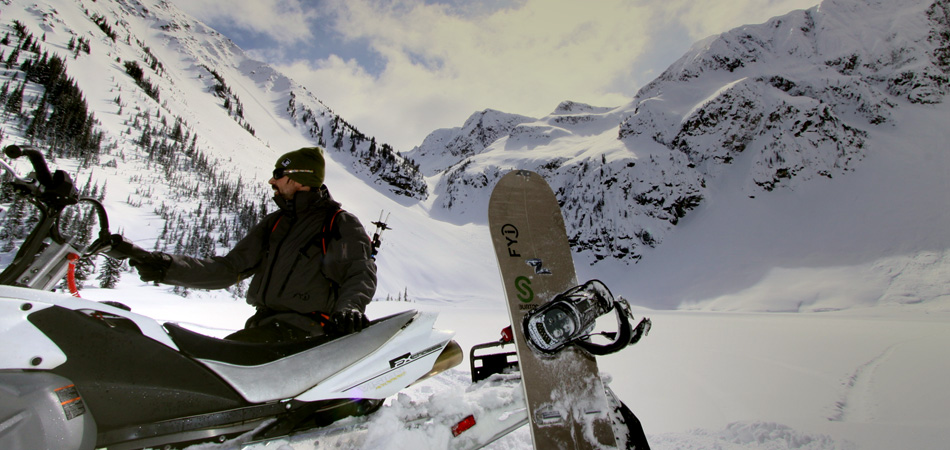
Being some-what secluded in interior British Columbia, has does this factor into your inspirations. Do you travel often on “inspiration trips” around the world or does your backyard provide ample amounts of ideas and inspirations?
We travel quite a lot, so everything balances out. We have a lot of exposure to interesting things during trips, and then when we come back to the studio, we have total focus on what we are working on. Inspiration comes from different places. We generally don’t follow what direct competitors are doing as it tends to influence your own thought process too much, we prefer to take an original approach to specific problems, which tends to create a unique solution. We also get a lot of inspiration from things happening in unrelated industries, like car design, architecture or maybe furniture design. Many times inspiration comes from raw materials as well, you see something new and you know what to do with it right away. Although it’s different for different projects. With clients like AETHER or SOPH. we have to dig deeper into who the customer is and what the intention of the product is for. We’re not just designing for ourselves, we have to get into the head of that customer. With BURTON [ak] we are essentially designing for our own lifestyle, so everything comes very naturally. Pemberton itself really represents the [ak] lifestyle, so we’re completely submersed in it on a daily basis. We’re building gear to function in our immediate surroundings.
When you mention trying to design for different people and inevitably different demographics, do you have a certain process in helping to align yourself with their thoughts and ideas. Or is there really nothing that beats good ol’ fashioned face-to-face communication? Is it difficult to keep ideas separate amongst your clients like Burton [ak], AETHER and SOPH.?
Face to face communication is crucial, we need to understand who the core customer is, what they value, and how they see things. Having grown up in the outdoor / mountain environment, you see things a certain way, you’re conditioned to your perspective. Sometimes we get surprised, so it’s important to confirm our direction aligns with the end user. For example a few years back we designed a technical travel jacket for Tumi. At the beginning of the process I thought they would love the GORE WTT, which is 3L laminate with a brushed poly interior and seam-tape. I thought they would like it as it was cleaner than a hanging liner and the interior was “friendly” for a 3L laminate. When I tabled the jacket, and turned it inside out to explain the construction, everybody cringed and thought the interior construction looked crude and unfinished… it was like putting on a different pair of glasses! I immediately remembered seeing the first GORE-TEX seam-taped 3L jacket as a kid and I remember reacting the same way to the interior. It’s just that I got conditioned to how 3L construction looks and feels. That was a bit of an epiphany. Once you put their glasses on, you can see and understand the customers perspective and design accordingly.
Yes, we have to keep a bit of a creative firewall between different clients and projects. Especially when there is R&D and intellectual property involved, as there often is. We keep all our projects confidential. We really focus on defining specific design elements and a “visual language” that’s unique to each program. Generally it’s not a problem as different projects tend to take on a life of their own and development heads different directions. Sometimes there is even a benefit, as something you learned from one project leads to something else new on another project. Ideas leap frog each other. A new construction technique in one category, can lead to something totally different when applied to another category.
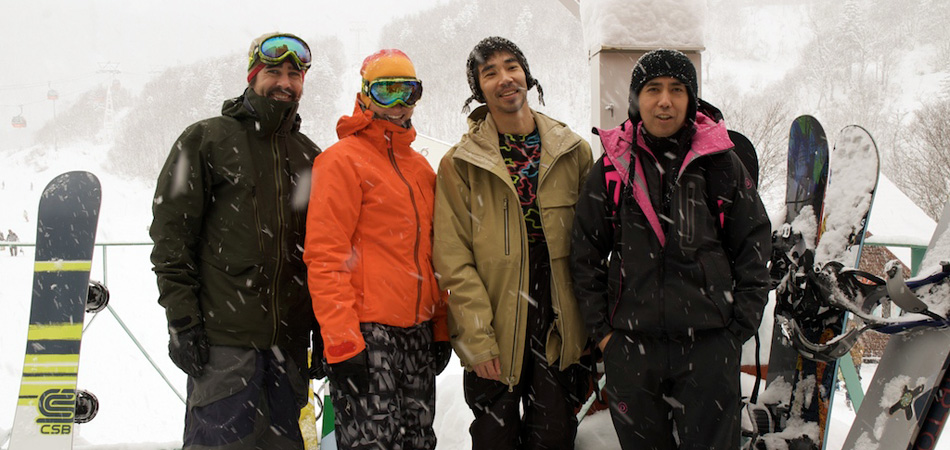
With an obvious need to combine good design with top-of-the-line materials, what represents some of the most interesting developments as of late in the world of technical matrerials? It seems that among the newer technologies are the likes of Schoeller c_change with its dynamic pine-cone design which allows for the opening of the jacket pores for breathability as well as heat insulation dependent on ambient body temperatures. How do these stack up against the traditional well-marketed heavy-hitters such as GORE-TEX?
Active membrane technologies like c_change are interesting, although I still prefer hydrophobic membranes that provide the highest level of breathability with no water absorption. In my experience, I have yet to wear a hydrophillic urethane based laminate that’s as comfortable in all conditions as a hydraphobic PTFE (polytetrafluoroethylene) laminate. So in that respect, GORE and eVent are the top players in my mind. GORE is a marketing powerhouse, but it’s not just smoke and mirror’s, the product is legit. PTFE is literally Teflon based artificial skin that’s used for burn victims (GORE is bigger in the medical field than GORE-TEX is in outdoor). I’m not dissing the pine-cone, I just think simulating how skin functions is the best objective to be taken from nature.
One interesting new material technology is soft impact protection in which the polymers lock on impact. It’s like the corn-starch experiments you did in grade school, it can be as soft as silly putty yet essentially turn into a solid at the moment of impact, thereby spreading the load. Another one (that’s been around for awhile) is phase change insulation, in which molecules embedded in a material transform from liquid to solid at a specific temperature threshold. This can be useful to regulate comfort to a degree. Say you are skiing and you generate a lot of body heat on your descent, that heat is absorbed by the molecules and at a certain temperature it has a ‘phase change” from solid to liquid inside the molecule. As you ride the ski lift and your body temp drops, the molecules “give back” some of the heat generated on your descent while changing back into a solid. So it’s effective in regulating the temperature extremes over short cycles of less than 20 minutes… so you don’t melt down while being active and/or freeze the moment you stop.
Although everything interesting isn’t always new tech… for example Stotz of Switzerland makes a totally unique waterproof cotton, which sounds like a contradiction, but it’s not. This is the stuff that fighter pilot survival suits were made from back in World War II. The cotton fibers are woven so tightly, that when the fiber is exposed to moisture, it swells, making the textile totally waterproof. Yet when sitting in a 100 °F cockpit, the suit still breaths like cotton. Stotz is the only mill in the world that can produce the stuff and it’s even more expensive than GORE-TEX. Retro-tech is always interesting. There has been a lot of good thinking done in the past. Back in the day people were climbing Mount Everest before nylon ropes, laminate textiles, carbon ice axes and plastic boots…it didn’t stop them from finding solutions. Sometimes looking backwards reveals a good path to the future, or at least a good idea that can evolve with modern materials and processes.
It’s great to mention “retro-tech” as it seems as though people are sometimes looking in the wrong places and only forward to achieve performance standards. The new technologies sound promising to say the least. Are there any glaring weaknesses in what is available right now for materials or are you generally satisfied with the performance of what’s out there? I know that despite being labeled as quite breathable, GORE-TEX Paclite still has trouble cutting it during the humid typhoon summer months of Hong Kong.
There is a lot of great materials available today. I agree with you in regard to Paclite, and I’m not a big fan of GORE WINDSTOPPER either, although that really depends on the intended use. Breathable membranes work best with a big differential in temperature from the inside to the outside. It’s your body heat that’s driving the water vapor through the barrier and when it’s just as hot and humid outside it doesn’t work so well. So in the hot and humid HK typhoon season, you’re pretty much guaranteed to swamp out. Those conditions are handled best with a thin air-permeable softshell, or better yet a plated stretch woven, with a really good DWR treatment. Wind can whistle through while it’s still shedding water and wicking moisture away from the body. You’ll still be swampy in a swamp though. You can’t beat 100% humidity.
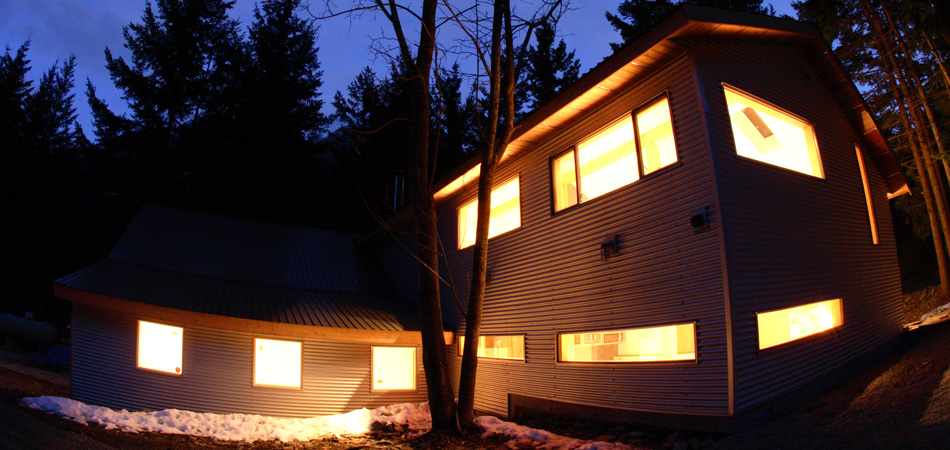
One area materials could still improve a lot is achieving performance and comfort in natural materials. Maybe it’s because I live in a tech bubble, but I’m tired of wearing synthetic materials all the time. For ultimate performance, when you really need it, synthetics work the best. The rest of the time, I want overall comfort to be a higher priority. A natural fiber is much more comfortable next to skin. So “natural high-performance comfort” would be an interesting departure. Wool has gone through a revolution in finishing technologies over the last decade and there are some really amazing base layer textiles out there now that really are comfortable next to skin and arguably perform better than synthetics. That was impossible 15 years ago.
Although regardless of materials innovation, it’s still a matter of what you do with the materials as a designer and the quality of execution at the factory. An amazing material with a great design is still a piece of shit without quality workmanship. Quality is suffering today. Everything just falls apart and is essentially disposable. Even some of the highest end fashion labels have terrible workmanship in their products today. People are paying a premium for something special and (in some cases) getting something below average. It’s pretty amazing. The biggest improvement in my opinion that can be made in garments today is in the quality of workmanship at the factory level.
It does make sense that when you incorporate a certain level of performance you need a complete package that includes manufacturing processes and materials. It seems as though sometimes brands might leave it up to a brand-name material to sell their product. We have seen various Japanese brands from a more fashion-minded background incorporate technical materials including the likes of SOPH. How did your initially meet up with them and could you give us some background into the FSF Urban Project which was recently unveiled?
We originally met the SOPH crew last December. Hiroshi Fujiwara introduced us and had the idea for the recently seen FSF Urban Uroject, which stands for FYi x SOPH. x fragment. We are working with Hiroshi on the AK457 program as well. The whole thing was Hiroshi’s idea. Coming from North America, SOPH. was a new brand to us, and Hiroshi took us there to meet Mr. Kiyonaga and Yasushi-san. The philosophy was to apply our technical construction expertise to SOPH.’s sophisticated Japanese urban streetwear. SOPH. and fragment developed the “FSF Urban Project” identity and selected all the final colors and branding details inside and outside the garments. SOPH. and fragment defined the type of jackets they were looking for and gave us the creative freedom to design and develop our best work. Then Yasushi coordinated all the sourcing and manufacturing logistics. The project is running really smooth and the line is growing.
Do you find any differences in design approach between the Japanese and their Western counterparts due to their cultures?
I do see some differences culturally, although it really depends on the client and the project. In the case of SOPH., they have initial ideas of what they are looking for and then they totally trust FYi to drive the design from there. In the case of AETHER, they are really relying on us for technical construction details, materials and fit development, yet they have a very clear vision for what they want and who their customer is, so we take that direction from them and design accordingly. With Global Burton [ak], we are really driving the vision and we generally don’t even want or need design briefs. We live, eat, and breath this program, and we know what we need to do. For AK457, it’s a more unique situation. This is a special line specific for Japan. Normally we do all our design and development work with Burton headquarters in Vermont. However with 457 we are working directly with Burton Japan, Hiroshi-san, and Masanori Takeuchi. We are using a different factory too, so the entire process is different from global [ak]. The focus is really on the most technical gear for snowboarding, and Hiroshi and Masa are both great snowboarders, so we’re speaking the same language, even though we’re not (literally). Each project/program runs differently and we tailor our services accordingly. I’m not sure if it’s so much geographical cultural differences, as it is corporate cultural differences between how different companies work. Although having said all that, I do think that culturally, there is a greater appreciation for attention to detail, and technical product design in Japan.
It sounds as though each client and project entails its own very careful planning and separation. What can we expect going forward from FYI, any chances of an FYI in-house label? Any last words you’d like to say?
Well, we will continue to develop [ak], AK457, AETHER and SOPH./FSF for the foreseeable future… we’re very committed to those programs. Beyond that we have a few new projects on the go. We are kicking off an S/DBL x FYi collab. That’s a project with Shawn Stussy and his label S/DBL, that will be very interesting. As for a FYi house label… all I can say is that we have a variety of projects in development, and that they are in unrelated categories to anything else we have done to-date. But it’s too soon to say what it is just yet. Sorry to be cryptic, you’ll know as soon as the time comes. Thanks for the insightful questions. Good discussion. Cheers, TR
